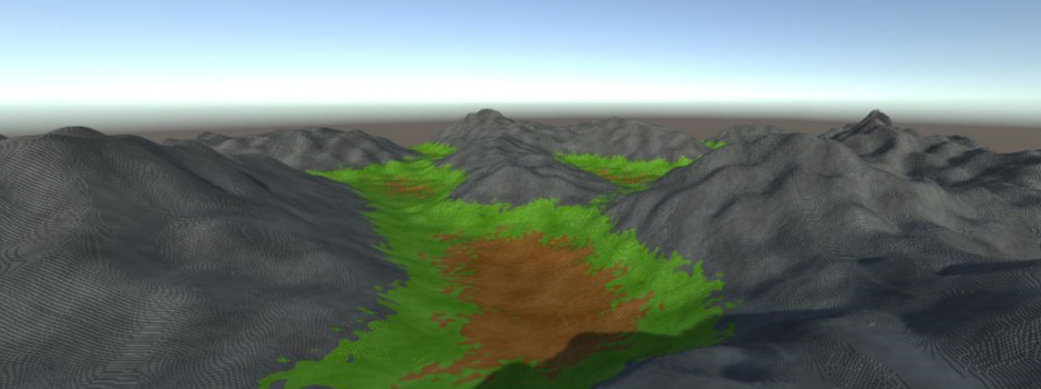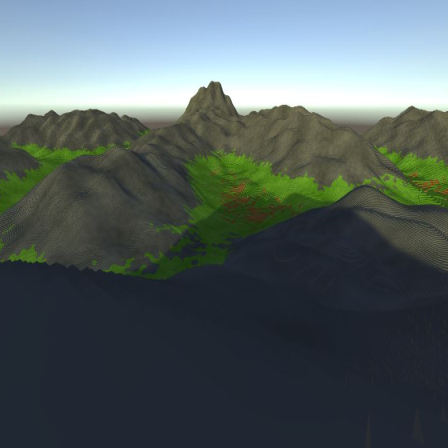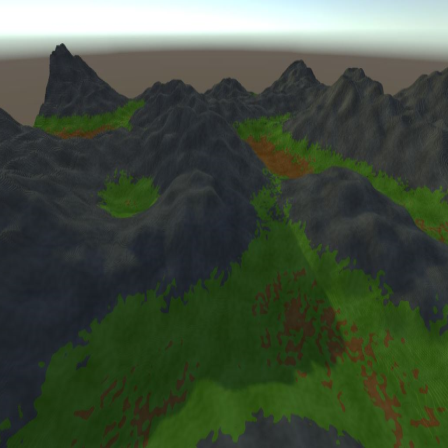Octree Terrain
 My MSc project centered around the use of level of detail (LOD) systems in computer graphics. In it, I proposed a novel method for leveraging human perception to optimize detail allocation based on
human perception. In the method I use the geometrical properties of an octree when projected on the screen to dynamically determine LOD transition distances at a minimum cost to performance. Octree data
structures are often well suited to represent volumetrical data, as it can compress the memory footprint of said data greatly. In order to conduct an evaluation of my suggested method, I implemented a procedural
terrain generator in the Unity game engine. The terrain generator featured a wide array of different parameters, enabling the user to configure what the generated terrain will look like.
The choice of making a terrain generator as a tool to evaluate the LOD was made on the strong correlation of LOD systems alongside virtual terrains.
My MSc project centered around the use of level of detail (LOD) systems in computer graphics. In it, I proposed a novel method for leveraging human perception to optimize detail allocation based on
human perception. In the method I use the geometrical properties of an octree when projected on the screen to dynamically determine LOD transition distances at a minimum cost to performance. Octree data
structures are often well suited to represent volumetrical data, as it can compress the memory footprint of said data greatly. In order to conduct an evaluation of my suggested method, I implemented a procedural
terrain generator in the Unity game engine. The terrain generator featured a wide array of different parameters, enabling the user to configure what the generated terrain will look like.
The choice of making a terrain generator as a tool to evaluate the LOD was made on the strong correlation of LOD systems alongside virtual terrains.The terrain is rendered using a mesh which enables it to inherently leverage the post processing and lighting system in Unity. The mesh is also culled and optimized to only contain faces adjecent to air and upwards in order to lower its memory use. Over the course of this project, I got to learn a lot about working with Unity Jobs, which has been used alongside the Unity Burst compiler to improve performance. In addition to this, I also learned a lot about the area of research as a whole, mainly relating to procedural terrain generation, procedural meshing and creating performant algorithms.



I am looking to clean up my repository for this project and open source it in the near future. When I do, it will be available on my github.